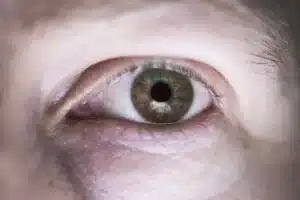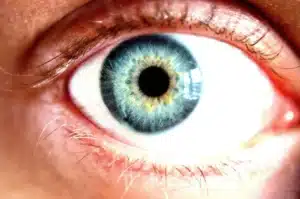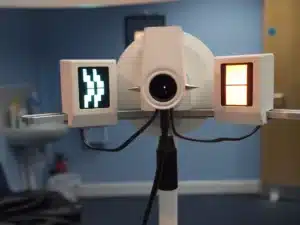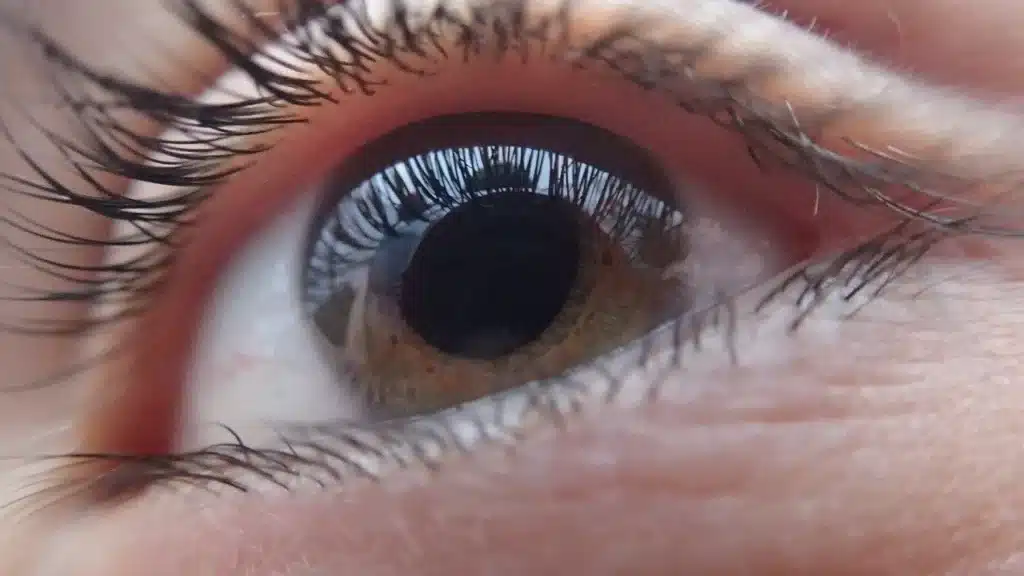The cornea is one of the most important structures of the eye. It acts as the outermost lens by focusing and controlling light in the eye. In fact, the cornea is responsible for nearly 65-75% of the total focusing power of the eye. Without a healthy cornea, vision problems are inevitable.
Of all the things that could go wrong with the cornea, one of the most common conditions today is keratoconus. This is where the cornea, which is normally round and dome-shaped, starts to thin out and weaken over time. Eventually, the cornea will start bulging out into a cone shape.
The good news is there are several treatment options available today. If keratoconus is caught in the early stages, you could avoid major surgery — such as a corneal transplant — with a rather new type of keratoconus treatment called corneal collagen crosslinking, also known as CXL.

So, what is corneal collagen crosslinking (CXL)?
Corneal collagen crosslinking, CXL for short, is a procedure that strengthens corneal tissue by forming covalent bonds between collagen fibers in the eye. It works in the same way a support beam strengthens the structural integrity of your home, except it strengthens the cornea.
Believe it or not, there is such a thing as natural cross-linking and it happens as we age. This is when the cornea naturally stiffens and ‘cross links’ over time, which could help prevent a thin cornea from growing thinner in older patients. This generally begins around the age of 40.
Although cross-linking for keratoconus patients was approved in Europe in 2003, the treatment wasn’t approved by the FDA until 2016 — making this a rather new treatment option in the United States. The good news is that it carries a success rate of over 90% with modern technology.
Who Can Benefit From Corneal Crosslinking?
Corneal collagen crosslinking is largely known for its treatment of progressive keratoconus, but that’s not the only thing it’s good for. In fact, there is a wide range of conditions that it can be applied with — all of which have to do with damage to the cornea or abnormal corneal shape.
Some of the other eye conditions that might benefit from corneal cross-linking include corneal ulcers, pellucid marginal degeneration, corneal ectasia following refractive surgery (such as post-LASIK ectasia or post-radial keratotomy ectasia), infectious keratitis, and a few others.
It should be noted that CXL won’t reverse changes that have already occurred to the cornea. Instead, it’s designed to prevent the condition from worsening by strengthening the integrity of the cornea. The ultimate goal is to help the patient avoid major surgery, like a corneal transplant.
Different Types of Corneal Cross-Linking (CXL)
There are two main types of corneal cross-linking procedures and they both have to do with the epithelial layer, which is the outer layer (front most layer) of the cornea. The corneal epithelium acts as a barrier for the cornea, protecting it from bacteria and resisting the free flow of fluids.
The first procedure is called the epithelium-off method, also known as epithelial removal. This is the standard and most effective form of cross-linking and involves debriding the epithelium. By removing this layer, the surgeon has direct access to the corneal stroma, the thickest layer.
The second procedure is called the epithelium-on method, also known as the trans-epithelial method. This method involves keeping the epithelium intact, which involves pharmacological agents to loosen the intraepithelial junctions, creating intrastromal pockets, or by iontophoresis.

During the Corneal Crosslinking Procedure
The corneal cross-linking procedure is a minimally-invasive outpatient procedure — meaning it’s done in the eye surgeon’s office — that generally takes anywhere between 1-3 hours from start to finish. Since it’s a minimally invasive procedure, the use of anesthesia isn’t that necessary.
Corneal cross-linking is possible thanks to two things — riboflavin and ultraviolet light. The riboflavin, also known as Vitamin B2, is administered via medication eye drops and it’s used as a photosensitizer, which helps the cornea absorb light energy and produces a chemical change.
Ultraviolet light, also known as UV light, is used as the source of light energy and is what induces collagen cross-linking. Your ophthalmologist uses UV-A light for around 15-30 minutes — approximately 45 minutes after applying the Riboflavin eye drops to the eye surface.
After the Corneal Collagen Cross-Linking Procedure
Directly following the corneal collagen cross-linking procedure, your ophthalmologist will place a soft bandage contact lens on your eye. This contact lens is designed to protect the cornea from the inevitable rubbing of the eyelids while blinking — providing an ideal healing environment.
Your eye doctor will also provide you with eye drops to use after the CXL procedure, which you’ll apply to the eye several times per day. This will continue for several weeks as the cornea continues to heal. You’ll have a few follow-ups with your eye doctor to check on the progress.
It’s important not to rub your eyes after CXL. You should also avoid putting your soft bandage contact lens back in the eye if it falls out. If that happens, call your ophthalmologist immediately and schedule a follow-up. The last thing you want to do is disturb the eye healing process.
You can expect to experience distorted vision, eye sensitivity, hazy vision, and blurry vision for a few weeks, but this should gradually improve as the cornea heals. In some rare cases, people experience an eye infection, eye pain, swelling, corneal damage, and epithelial damage.

Contact Milwaukee Eye Surgeons for an Eye Exam
If you’re experiencing vision problems that only seem to worsen, time is of the essence. The sooner you meet with an ophthalmologist, the sooner they can diagnose the issue and eventually treat it. By waiting, you risk temporary vision impairment or permanent vision loss.
These are things that no one should ever have to experience in life. That’s why Milwaukee Eye Surgeons is dedicated to providing best-in-class eye care services to ensure optimal eye health for everyone. To learn more about our services and schedule an eye exam, contact us today!


